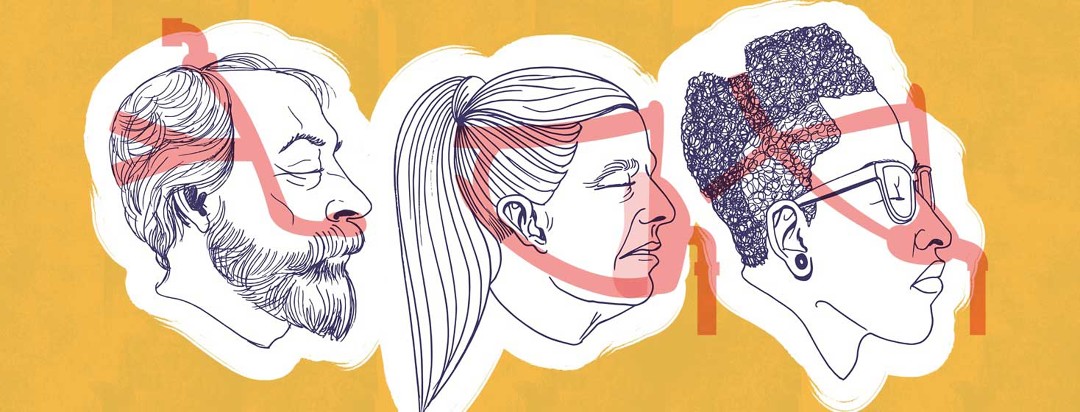Choosing and Using the Right CPAP Mask
If it can save your life, why would you reject a continuous positive airway pressure (CPAP) machine? Well, there is the Darth Vader factor. The look and sound may remind you of that evil person from “Star Wars.” But choosing and using the right CPAP mask can help you triumph.
What is CPAP therapy?
CPAP is the most effective way to treat sleep apnea, a disorder in which you briefly stop breathing over and over during sleep.1
Questions and thoughts may pop up while you're on your sleep apnea journey - share them with the community by clicking the button below!
The CPAP has a pump that blows air gently through a tube to a mask. The mask fits over your nose, or over your nose and mouth if you breathe through your mouth. The air goes through the mask into your throat. The air pressure keeps your airway open. The system is quiet and prevents your snoring so that you and your bed partner sleep better.1
Types of CPAP masks
CPAP masks come in three main types:4
Full face masks
Full face masks cover the entire mouth and nose, creating a seal over both airways. This type of mask is best if you need primarily breathe through your mouth, need higher air pressure, sleep on your back, or cannot breathe through your nose because of congestion or blockage.
Nasal masks
Nasal masks seal at the base of your nose and cover your nose. This type is good if you can breathe through your nose, need higher air pressure, do not want anything placed inside your nostrils, or move around during sleep.
Nasal pillow mask
Nasal pillow masks use small, flexible, mushroom-shaped pieces that fit inside each nostril. This type is best if you can breathe through your nose, need low air pressure, and want a full field of vision for reading or watching TV.
CPAP mask features
Many full face and nasal masks have a hard plastic body and a soft silicone seal that touches your face. Headgear with adjustable straps hold the mask in place. Features on some masks include:5
- An adjustable pad that rests on your forehead
- An inflatable seal or cushion
- A lower top edge to better accommodate wearing glasses
- A memory-foam cushion inside the silicone seal
- A thin plastic piece that slides from side to side as you move
- Alternative materials, such as synthetic rubber or vinyl, if you are allergic to silicone
- Gel-like material for better fit and less pressure
- A soft, flexible shell and gel cushion with a pliable wire for shaping the mask to your face
Alternatives include:5
- Tubes that fit inside your nostrils
- An oral appliance to move your lower jaw forward
Choosing the right mask
Your CPAP supplier will help you choose a good mask for you.2
- Try on a mask recommended by the supplier.
- Let the supplier help you adjust the mask and connect it to your CPAP machine’s hose.
- Turn on the machine.
- With air blowing from the machine, lie down in your usual sleeping position.
- Slowly tighten the mask straps until you get a good seal.
- Pull the mask away from your face and then gently put it back. This allows mask cushions to inflate for best comfort and seal.
You may need to try several masks before making your choice. The right mask will:5
- Be comfortable
- Seal to maintain proper air pressure
- Fit your face
- Provide features for your sleep and breathing habits
Research estimates that almost half – about 40 percent – of people stop using CPAP regularly after a few months. Mask discomfort is a major reason for stopping.2
It may take time to get used to your mask. Try putting it on while you watch TV. Make CPAP part of your bedtime routine, like brushing your teeth.3
Common CPAP mask problems and solutions
Some common problems with CPAP masks – and what to do about them – include:6
Skin irritation, sores, and bruises
You may be tightening your mask too much. Your mask cushion may need to be replaced. Some products that may help include RemZzz’s mask liners, Gecko nasal pad, MaskMate sealer and lubricant, and SoreSpot CPAP Skin Protectors.
Swollen or irritated eyes
To prevent a leak from the top of your mask, gently tighten the top straps. Check whether the mask cushion is worn and needs replacing. Use a fabric eye mask.
Sore nostrils from nasal pillows
Rotate the nasal pillow inserts to a more comfortable angled position. If a leak occurs at the nostril opening, try a larger size.
A whistling noise
Use a sewing needle or toothpick to unclog the cluster of tiny holes that allow carbon dioxide to escape.
Removing the mask during sleep
This is more common than you may think. You probably removed the mask because of discomfort or leak. Check for proper size, fit, and air pressure.
Claustrophobia
Nasal pillows may work better than a large mask.

Join the conversation